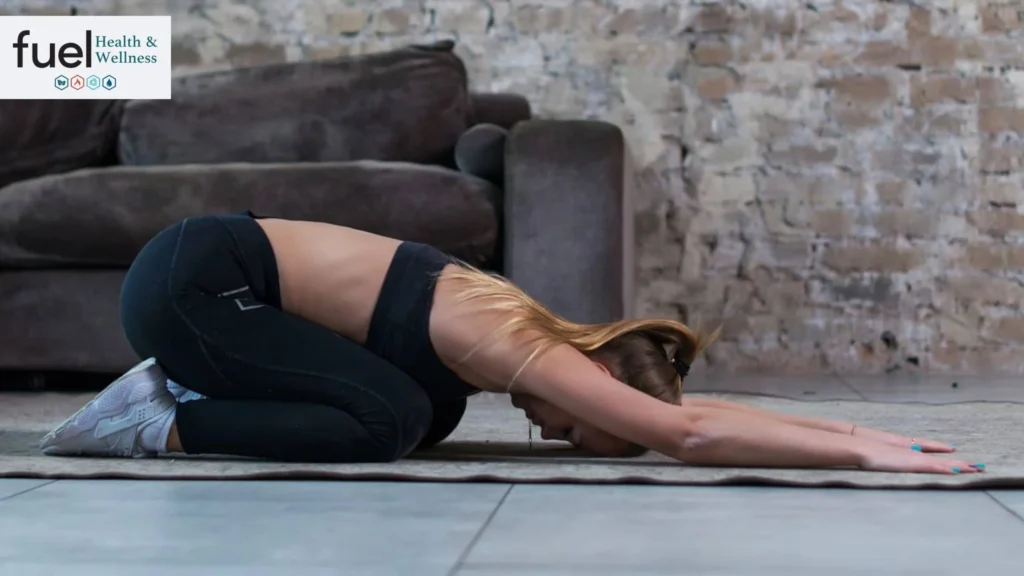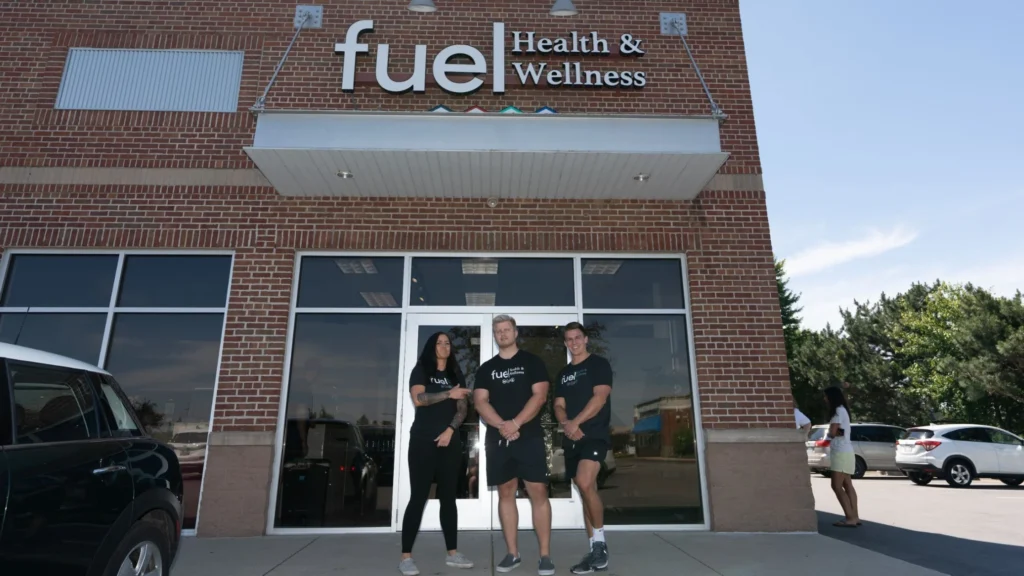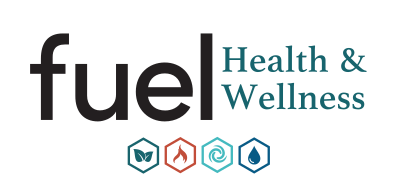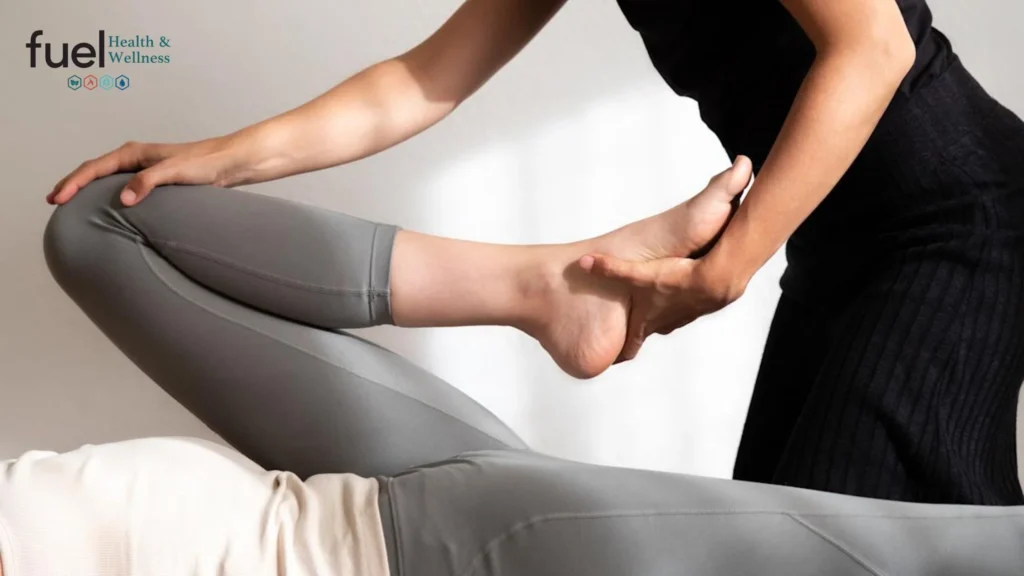Assisted stretch therapy sounds almost luxurious—someone else moves your limbs while you simply breathe. Yet it is far more than pampering; it is a science-backed modality that blends fascial stretch technique, proprioceptive neuromuscular facilitation (PNF), and corrective exercise principles to elevate flexibility, mobility, and long-term musculoskeletal health. Below is a deep dive into how one-on-one stretching is transforming wellness culture across Grand Rapids, Michigan, and why discerning residents are adding it to their weekly routines.
Defining Assisted Stretch Therapy
In assisted stretch therapy, a certified practitioner manually guides a client’s joints through precise ranges of motion while controlling speed, force, and breath cues. Unlike passive yoga or foam rolling, the practitioner actively stabilizes proximal joints and elongates fascial lines, ensuring the stretch reaches deep connective tissues that self-stretching can’t access.
Why Self-Stretching Alone Stops Short

Most people perform static holds lasting 15–30 seconds. While helpful, those quick pulls rarely address the fascial nets that weave around muscles. A trained Flexologist® or stretch coach layers traction, oscillation, and contract-relax PNF patterns to override the muscle-spindle reflex that limits range of motion. The result: greater extensibility with less post-session soreness.
Core Physiological Mechanisms
- Golgi Tendon Organ Reset: Gentle traction convinces protective receptors to “allow” longer muscle length.
- Viscoelastic Creep: Sustained low-load tension remodels collagen fibers, increasing compliant tissue.
- Neuromuscular Re-education: Repeated contract-relax cycles teach the nervous system a safer, wider movement map.
Those three pillars explain why clients often gain measurable flexibility after a single 50-minute visit.
Quick-Glance Benefit Matrix
| Goal | How Assisted Stretch Delivers | Typical Timeframe |
| Increased hamstring length | PNF + traction across hip capsule | 2–4 sessions |
| Lower-back pain relief | Decompression of lumbar fascia | 4–6 sessions |
| Athletic speed gains | Elastic recoil via dynamic stretches | 6–8 sessions |
| Posture correction | Thoracic opening and scapular mobility | Ongoing |
Evidence pulled from leading Grand Rapids studios and peer-reviewed mobility studies.
Local Landscape: Grand Rapids’ Stretch Revolution
Grand Rapids hosts a growing roster of specialty studios—from the science-driven Exercise Coach on Forest Hill Avenue to the energetic StretchLab at Knapps Corner, where Flexologists® create bespoke protocols. Many facilities emphasize evidence-based programming and maintain open, boutique environments that feel equal parts clinic and spa.
One standout is the fascial stretch–focused program highlighted at Fuel Physical Therapy & Wellness, reflecting a statewide uptick in preventive flexibility training.
The Typical One-on-One Session Flow
| Phase | Duration | Key Actions | Sensations Clients Report |
| Intake & Mobility Screen | 5–10 min | Posture photos, goniometer ROM tests | Curiosity, slight surprise at asymmetries |
| Warm-up Traction | 5 min | Gentle pulls along spine & hips | Light decompression |
| Active PNF Series | 20 min | Contract-relax across tight chains | Mild effort, warmth |
| Fascial Glide & Oscillation | 10 min | Long-lever stretches + rhythmic shake | “Aha” release, deeper breath |
| Cool-down & Homework | 5 min | Hydration cues, at-home mobility drill | Clarity, looseness |
Seamless Integration With Broader Wellness Plans
Clients often stack assisted stretching before resistance training or after endurance sessions to accelerate recovery. Grand Rapids personal trainers note improved squat depth and reduced delayed-onset muscle soreness (DOMS) when flexibility work precedes loading. Physical therapists likewise bundle stretch therapy with dry needling, cupping, or myofascial release to expedite post-surgical rehab.
Internal Biomechanics Meet Real-World Outcomes
Stretch coaches in Michigan track gains via:
- Sit-and-reach or goniometer angles
- Functional movement screens (FMS)
- Vertical jump or gait-cycle symmetry
Reports from Exercise Coach cite 10- to 20-degree hamstring improvements within a month, correlating to reduced lower-back flare-ups. StretchLab’s client testimonials echo similar data, emphasizing newfound shoulder mobility that carries over to golf swings and overhead lifts.
Discover the specific fascial stretch approach and individualized progress mapping used in Grand Rapids’ boutique studio through this assisted stretching resource on the Fuel Heath Wellness assisted-stretching hub.
Who Stands to Benefit Most?
- Deskbound professionals battling tech-neck and lumbar tightness
- Runners & triathletes seeking hip-extension efficiency
- CrossFit® and powerlifting athletes hungry for deeper squat mechanics
- Active agers preserving independence through balance and joint integrity
- Post-injury clients transitioning from passive physio to active maintenance
By targeting fascia rather than isolated muscle bellies, one-on-one stretching in Grand Rapids adapts to each demographic’s tissue quality and pain threshold.
Safety, Contraindications, and Practitioner Credentials

Assisted stretching is gentle but not risk-free. Clients with acute strains, recent joint surgery, or systemic connective-tissue disorders should secure medical clearance first. Legitimate providers hold certifications from StretchLab, NASM Stretch, Fascial Stretch Therapy™, or registered physical therapy licenses, ensuring mastery of joint biomechanics. Meet some of West Michigan’s credentialed pros on the Fuel Heath Wellness team roster.
Pricing & Scheduling Expectations
Most Grand Rapids studios sell 25- or 50-minute packages, averaging $55–$90 per visit—often cheaper in multi-session bundles. New clients usually receive a complimentary mobility assessment, making the initial barrier low. To determine availability or insurance compatibility, curious readers can reach out through the Grand Rapids contact portal at Fuel Heath Wellness.
Semantically Related Concepts to Know
Flexibility training, dynamic mobility drills, soft-tissue remodeling, neuromuscular facilitation, muscle-tendon junction, active recovery, injury prevention, posture optimization, chronic pain management, sports performance enhancement, wellness coaching, kinesiology, joint articulation, muscle inhibition, connective-tissue hydration, fascia lines, proprioception, range of motion, Michigan wellness industry, Grand Rapids fitness community.
Frequently Asked Questions
How is assisted stretch therapy different from massage?
While massage manipulates soft tissue to improve circulation and reduce tension, assisted stretching lengthens muscles and fascia by moving joints through a customized range of motion. Massage is primarily compressive; stretch therapy is primarily elongative.
How often should someone schedule one-on-one stretching in Grand Rapids?
Most beginners benefit from one 50-minute session per week for the first month, tapering to bi-weekly maintenance once optimal range of motion is achieved.
Will flexibility gains last if I stop sessions?
Like strength training, mobility improvements are “use it or lose it.” Without continued self-work or periodic professional stretches, tissues slowly revert to baseline length.
Can assisted stretching help with chronic lower-back pain?
Yes, by decompressing the lumbar fascia, mobilizing hip flexors, and re-educating core stabilizers, many clients report reduced spasms and better posture after 4–6 sessions.
What should I wear or bring to a stretch appointment?
Light athletic clothing that allows full joint movement, a water bottle, and any recent orthopedic notes if you’re post-rehab.
The Takeaway
Assisted stretch therapy in Grand Rapids marries evidence-based science with hands-on care, giving Grand Rapids residents a proactive tool for flexibility, pain mitigation, and athletic performance. Whether you are a marathoner chasing a personal record or an office worker combating hours of sitting, structured one-on-one stretching delivers measurable, feel-good results.
Service proudly provided in West Michigan by Fuel Heath Wellness—where science meets stretch for a more mobile life.


